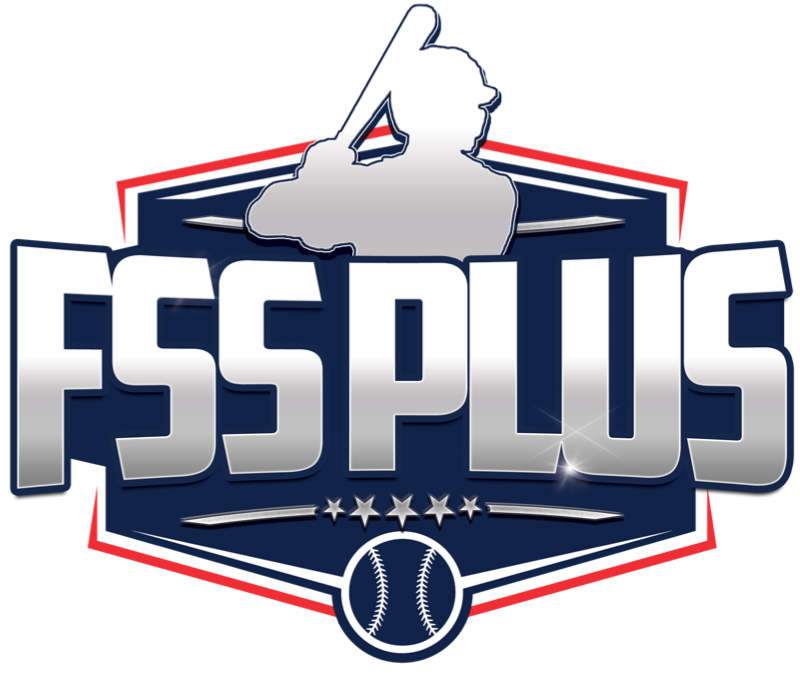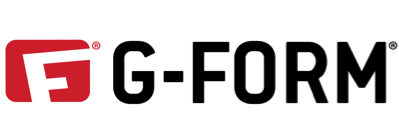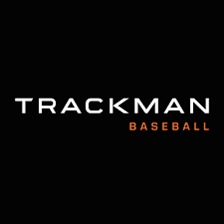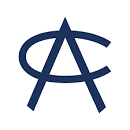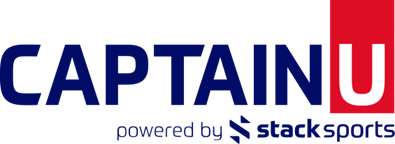 When it comes to looking back at 2017 with the New Balance Baseball Future Stars Series and Program 15, there’s a lot to take in.
When it comes to looking back at 2017 with the New Balance Baseball Future Stars Series and Program 15, there’s a lot to take in.
From the transition from the planning phases of how an exceptional group of people could help “change the game” and make a positive impact on player development to the actual execution of it, it may go down as the most memorable year in the company’s history.
“Look at how quickly P15 jumpstarted,” said P15 Director of Operations Adam Czajkowski. “It went from being with (CEO) Jeremy (Booth) at the beginning and having the concept in 2016 and doing proposals and things like that, and then all of a sudden we’re executing everything. We were doing combines, huge tournaments. It was amazing to see how quickly it took off in just a year. In Houston, we had three events and a total of just about 64 teams from all across the country, even outside the US. That’s incredible for someone to be able to do that in less than a year.”
Between the national tournaments spotlighting the 2018, 2019 and 2020 grad classes as well as the much-anticipated International Week in Sugar Land, Texas, it was a full slate for P15.
Without question, they delivered.
“One of the things that I always want to be able to say. When I say I’m going to do something, I do it and I deliver no matter what it takes to get there.” Booth said.
Not only was there an execution on the P15 side, but from the players and programs they partnered with that helped provide a very high level of competition that continues to draw people in from all around the country and beyond.
“I was there the first year the Area Code Games started, and as soon as you watched a couple of the games and saw some of the players, you felt like this was going to be all right, a pretty good event,” said P15 Vice President of Scouting Butch Baccala.
“I felt the same way when I was sitting in the stands in Texas watching some of the players and just the teams and the way they competed, as well as the level of excitement of the people and players. Honestly, I was blown away by the whole thing. I said, ‘Man, this thing is going to better than I ever anticipated.’”
FINDING THE RIGHT PARTNERS
There would be no Program 15 or New Balance Baseball Future Stars Series without the right partners.
However, whether that be valued corporate partners, or the endlessly growing list of programs that have trusted P15 to help guide their player development, without being able to deliver on the initial vision, everyone would look elsewhere.
It’s become very clear, after the results of that first year, that they no longer have to.
“People want to be a part of something better,” Booth said.
“I think that what I’m most proud of is that this isn’t a showcase. Yeah, there’s an exposure element to anything, but we can pick up the phone, Butch, (National Outfield and Baserunning Coordinator) Roberto Kelly, all of us here, and say a kid can play and that satisfies your exposure. People don’t realize that all the time because you feel like the person has to see them, but we can pick up the phone and accelerate the process to for scholarships and turn pro teams on to players because we’ve done it. So, when you’re talking about the things we’re talking about from a sponsorship standpoint, these partners believe in something bigger and they see something that gives back. They want to be a part of that from a standpoint of helping players be the best they can be. Whether or not these guys are big leaguers, these guys are going to be the leaders of tomorrow; there’s a future GM in there, there’s scouting directors, there’s lawyers, there’s doctors, there’s community leaders and there’s all kinds of people that are going to go far beyond baseball.
“New Balance believes in that from the beginning, and they’re all about family and giving back to community. Watching these guys jump on board with something like that to make this better and the best possible event series we can have is something that’s been amazing and humbling. Every time I turn around, somebody wants to be a part of this, and they’re not even asking for dollars. They’re not asking about what’s in it for them. They’re saying how do they become a part of something that’s better, and how can they make it better. We’ve gotten to a situation where youth sports, amateur baseball, travel baseball has become about money. Any time you’re dealing with money, regardless of the business component, that’s great because everybody has to make money or the world doesn’t work…but you can’t make money on the backs of kids and not deliver.”
With the quick success of P15, more and more companies with deep roots in the game wanted to jump on board. New Balance, All-Star, Franklin, Zinger Bats…the list goes on and on.
“Every partner we’ve been involved with has had a very strong track record of doing well in the baseball world, and they’re very well known throughout the industry, so that’s brand recognition right there,” Czajkowski said.
“Any time you’re partnered up with someone who has strong brand recognition, you’re automatically dubbed as having credibility because people look at it as if they’re partnered with you, you have to be good. That helps enormously. From going from starting from nothing and having to really gain people’s trust, that’s a testament to JB, because he was able to sell the product and really believed in it. The brand leaders saw his passion and his credibility in the game, as well as his desire to grow this. Those Companies partnering up with us is a big part of what JB brings to the table. Now that we’ve become more established, people reach out wanting to partner with us, and that’s nice to see too. It shows us we’re doing something right now that people are coming to us.”
However, while every successful company at this level needs those corporate partners, Booth is careful to stray away from the selfish nature that’s sunk competitors and only work with those where it’s clear that both sides are able to benefit.
“I think what we’ve done from the beginning is doing things that are win-win,” he said.
“Any time you do things that are win-win and not one-sided, it’s really dependent on both sides to do their part, because you’re both giving. There’s a lot of people that do deals that are one-sided and are all about them, and I don’t believe in that. I don’t think that anybody should walk away from something feel like they got screwed or ended up on the bad side of things. I like to do things that are mutually beneficial. So, when you see these other partnerships, we’re dealing with them in the same way. They’re all going to be mutually beneficial. It is extremely less stressful to have them reach out to us and ask how to become part of this and saying this is outstanding than us having to go to them and talk about what we’re doing. New Balance, more than anybody — along with Franklin, All-Star and Zinger – has stepped up their commitment to make sure we have that strength to continue to grow it. It’s been a big stress relief for myself and the company as a whole as we find ways to fund these things for these players.”
And, of course, this is all about player development.
Doing it differently.
Doing it better.
Doing it right.
Some of the biggest teams in travel baseball recognized this right away, and they wanted in.
“Ontario Blue Jays, NorCal Baseball, Trombly, Next Level, Rhino, US Elite, Minnesota Blizzard, GBSA Rays, Showtime Baseball…there’s a handful of clubs that have basically turned over their organizations to us from this standpoint; open access, asking what they have to do to be involved, how do we get our kids seen, saying they trust me and they trust Butch, they trust the staff,” Booth said.
“I walked out of the Ontario Blue Jays pro day the other day, and Evan Chenier, who is a Tommy John survivor and we had on our World Team, was 91 with a breaking ball, a changeup and a repeatable delivery. I got on the phone, and because we have that history, I was able to speak to him and able to make a phone call for this kid. He’s got five or six schools that are breathing down his neck now for a scholarship, and he didn’t have anything before. The programs that are really investing…you see the other players that are around them that are part of that benefit. You maximize the returns, save the families some money and keep the players playing in their communities as long as possible. It’s been rewarding for the player, for us and of course the program.”
QUALITY INSTRUCTION
Simply put, Program 15 provides an unparalleled roster of instructors.
Booth brings 18 years of professional baseball experience as a player, coach, and scout. During his time as a scout he cross checked two regions and while in that role did “special assignment” professional scouting work, consulted on their organizations prospects and affiliates, and spent time in Latin America. Over a ten year playing career, he spent time with both Tampa Bay and Milwaukee, as well as professionally in Mexico and Independent baseball. After his playing career, he became the Hitting Coach and Assistant Director of Player Procurement for the Sussex Skyhawks in the Independent Can-Am League.
Kelly was signed by the New York Yankees as an amateur free agent in 1982 and went on to play 14 years in the Major Leagues for the New York Yankees, Cincinnati Reds, Atlanta Braves, Montreal Expos, Los Angeles Dodgers, Minnesota Twins, Seattle Mariners, and Texas Rangers. After his playing career, he managed the Augusta Greenjackets, an affiliate of the San Francisco Giants. He would later become a Major League coach working with hitters, outfielders and baserunning for the San Francisco Giants. He was an integral part to the organization winning three World Series Championships in five years.
Baccala has an extensive background as a player, coach, and scout. Butch played his high school baseball at Petaluma High School where he would be named the 1980 Citizens Savings California High School Player of the Year. He would go on to play at San Francisco State University
He is in the Hall of Fame for both Petaluma High School and San Francisco State University. After being a D2 All-American in 1982, he was drafted by the Philadelphia Phillies in the 12th round. Unfortunately, his professional playing career would be cut short due to injuries. After his playing career, he began coaching at Santa Rosa Junior College. He would coach for the next 4 seasons among the college and professional ranks before moving on into the amateur scouting world.
Butch began his scouting career with the Seattle Mariners as an Area Supervisor and would move on to work with the Atlanta Braves as a Regional Crosschecker, then the Cincinnati Reds as a National Crosschecker, and most recently ending back with the Seattle Mariners as a National Crosschecker. Butch would then open up a training academy called the California Academy of Baseball to instill his knowledge and help develop young players.
National Catching Coordinator Chad Moeller was drafted out of college by the Minnesota Twins in the 7th round. He would go on to playing 11 years in the Major Leagues playing for the Minnesota Twins, Arizona Diamondbacks, Milwaukee Brewers, Cincinnati Reds, Los Angeles Dodgers, New York Yankees, and Baltimore Orioles. After his playing career, Chad opened up the Chad Moeller Baseball training facility where he provides private instruction in hitting and catching.
And the list goes on.
“What stands out is people believing in the vision of giving back,” Booth said. “Anybody who’s ever done this at any level for any length of time believes in player development. Player development is something that is used and thrown around, but a lot of people don’t really execute that. I’m not afraid to say that, they don’t. What separates our guys is they teach, they’re knowledgeable on what they’re teaching, they’ve been to the highest levels and they understand how to communicate to the younger kids that are just coming through that are going to carry this game forward. Believing in that, and watching those guys get back together as a unit – from Roberto Kelly, to Sean Travers to Benji Gil to Steve Randolph and Danny Ardoin and watching Chad Moeller at the combines that we’ve had – it’s been pretty special. You don’t get to see guys like that come together very often, and the way they executed is something that’s started to spread, and that’s a good thing.”
GRAD CLASS TOURNAMENTS
The quality of that instruction was evident at the national tournaments, which were not only used to determine the best teams in the 2018 (US Elite), 2019 (Rhino) and 2020 (Game Prep) classes, but to provide state of the art technology and access to metrics that will help all players and teams better develop.
Those events featured the debut of Program 15’s partnership with Prospect Wire, which has proven to be a mutually beneficial relationship that’s maximized strengths and continued to grow the game for players.
“The national tournaments, we want kids to be able to play with their teams and we want to be able to reward partner programs and programs that are development-first organizations that truly give to their kids,” Booth said.
“There are some organizations out there that really, no matter what they tell you, they don’t care about what happens to your kid. They’re exposure oriented only and showcase and so on. I understand that’s an industry, but that isn’t helping the game and that isn’t helping the player. The organizations that we have, when you bring them under one roof, whether it’s national or super regional, when you bring that type of brotherhood together and let these kids play with the people they’ve developed with all year, it’s a lot of fun. It helps us evaluate players, and helps us get a bigger cross-section to separate people into which exposure-oriented event they should be a part of to help them get a maximized return. The nationals are extremely important for that. Teams that are coming to the nationals and super regionals see far more benefit than teams that don’t. End of story.”
The grad class tournaments featured some exceptional baseball, and little in the way of hiccups despite each year being the inaugural installment of that particular event.
“Overall, I was extremely happy,” Czajkowski said. “We had a lot of guys on the staff that were flexible, worked together and everyone chipped in. Whether it was run the merchandise tent, or going out to pick up cups for the coolers, everybody chipped in and wanted to be a part of it. That’s why it went so well, everyone did their part and helped out in any area they needed to. And, we were organized. I’m not surprised it did as well as it did.”
And it wasn’t just Program 15 or their partner programs whom it went well for. Many of the seemingly countless scouts who attended didn’t go home empty-handed.
“When you can get 25 teams in one place and then they bring the players that they brought…look at the Minnesota Blizzard and the group of pitchers and position players that they brought,” Baccala said. “All have received scholarships now to major Division 1 schools. (Drew) Gilbert went to Oregon State as a pitcher and outfield, one of their pitchers is going to North Carolina another is going to TCU. It was incredible to see. For our first year and the schools that came to see it the first year and then the players that they were able to get out of there, it speaks to what the tournament will be like this summer and how many more players and teams will be there.”
INTERNATIONAL WEEK SERVES AS BIGGEST SUCCESS
In the months leading up to it, it became apparent that the International Week series was going to be the culmination of a year’s worth of hard work.
Using a mix of players plucked from the national tournaments as well as some of the top talent from around the globe, the three-game series brought together some of the best, draft-eligible players to one, big stage.
They did not disappoint.
“To see the event happen and for it to become a reality, to have players who represent other countries and to watch the pride they played with to start their own legacy meant a lot,” Booth said.
“There was a moment where I took a step back and realized that professional scouts and development people who have been doing this for a long time had bought into the vision that we had to create something better that was focused on the stars of tomorrow. The players showed up, and they delivered. That meant more to me than I can probably put into words.”
Eight of the attending players – (41) C Noah Naylor, (94) P Dominic Pipkin, (115) P Mason Ronan, (146) OF Vinny Tosti, (159) P Kaleb Hill, (169) INF Sean Guilbe, (261) INF Mateo Giland (288) P Yeankarlos Lleras – were named to Baseball America’s Top 300 prospects list for the upcoming draft, but from top to bottom, both the National and World rosters were absolutely stacked.
In addition, Baseball America had International Week standout Grayson Rodriguez touching 98 miles per hour this spring not long after working with Randolph and pitching coach Jason Phillips in Sugar Land.
“For a first year event, you never know what you’re going to get and what you’re going to have, but the players that showed up and did what they did, it was kind of like how our first year went as a whole, everything just went right,” Baccala said.
“When you have that level of talent and have that many major league teams that represent themselves at your event, it’s positive all the way around.”
“Our focus was baseball,” Booth added.
“We wanted to make sure the players were good, the talent was good, we had good citizens and we had people were open-minded and wanted instruction. It is a development event, and none of these players are finished. They’re all just beginning. We have a tendency in this travel ball world to feel like kids are finished products, and they’re all still beginning a journey, this is just another phase of it. From an execution standpoint of it, there’s always ways you can improve and always ways you can get better, but I was very happy with what we did baseball-wise, what we did off the field for breakout sessions and mentorship. Of course our sponsors like New Balance, Franklin, All-Star and Zinger and everybody that was a part of it did a phenomenal job of making sure the players had what they needed to perform.”
Not only did those players perform, they did so for three days at beautiful Constellation Field, home of the Atlantic League’s Sugar Land Skeeters.
“It was, aesthetically, first class,” Czajkowski said. “I’d put that stadium up with any minor league park in the country, it was a beautiful venue and a great place to be. Even the hotel, everything from top to bottom was first class. Everyone worked really hard to make sure it was a first class event and making sure everyone felt like this was really prestigious. I thought we had a great coaching staff, and they were excited to be there and there for the right reasons. The caliber of talent was surprising too, not that I didn’t think we could pull in good talent, but you sat back and looked and we had a really strong roster for an event of that nature. For a first year event, that was a great roster one through 25 for each team. It was fun to watch, those were fun games to watch. They weren’t boring or dragging on, the kids were energetic and enjoyed it as well. That’s a testament to them.”
Between the quality of competition and the beautiful, professional stadium to play in, the reviews for International Week were all positive.
“All the players that were there last year really liked it, they all liked it,” Booth said. “Some guys, like Sean Guilbe, who was kind of an underappreciated commodity, and Franco Aleman, (Dominic) Pipkin and some of these guys there were questions about, like Vinny Tosti, they showed up and they were part of it and it was something that, from their perspective, they all left better than how they showed up, which was the point. We had some younger guys, like T.J. McKenzie, who was a sophomore, and Edison Renteria, Jr., who was a sophomore, Blake Buckle…we had some younger players and they’re going to be back this year in this coming event on their respective clubs. For them to come back, and for them to say, ‘Absolutely, can’t wait, thank you so much for having me back,’ and these guys are all significant prospects for their draft year, is pretty rewarding and tells you how the players feel about it. We wanted guys that scouts needed to spend more time with. The guys that can make or break your draft whether it’s a power arm with feel to protect his fastball, or a middle of the diamond defender with offensive ceiling. I feel like that happened and the players came away better. I know we did.”
Of course, the scouts in attendance felt pretty good about the players they saw as well.
“Sean Guilbe, just the physical nature of his game offensively stood out,” Baccala said. “Noah Naylor, obviously he sticks out on every field he plays on because he’s got dominant tools. Some of the pitching…you look down the road, and some of these guys are going to be good. Mick Abel, although he pitched late and was very young there, he looks like a guy that’s going to be a dude.”
PROGRAM 15 POISED FOR BIG THINGS IN 2018
As Program 15 and the New Balance Baseball Future Stars Series continue to grow, there’s plenty of room for things to get bigger and better in 2018. But anyone associated with the company from the very beginning feels nothing but pride in just how quickly things were able to grow in the first full year.
“It’s awesome, it’s always cool to be a part of something that’s bigger than you and to see something start from the ground up and be a part of that in 2017,” Czajkowski said. “It’s never a one guy operation, but it’s cool to see you’re making a difference and you’re helping turn something into something big. It’s all rewarding at the end of the day.”
“I’m proud of the year we had, and I’m happy we got to do it with the people we did,” added Booth. “We’re excited to keep this going and have an even bigger 2018.”
